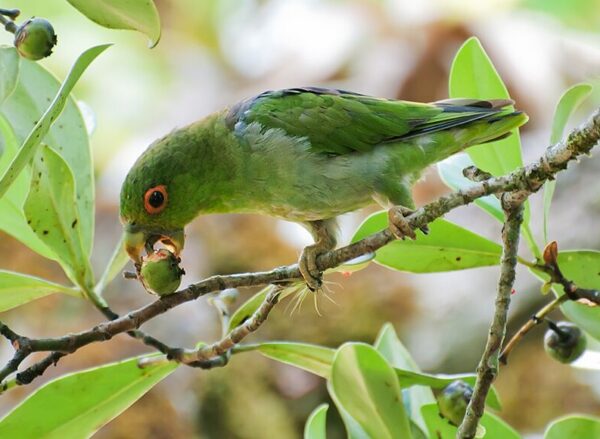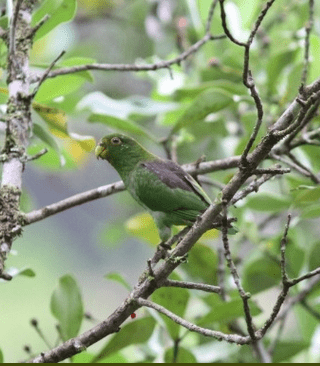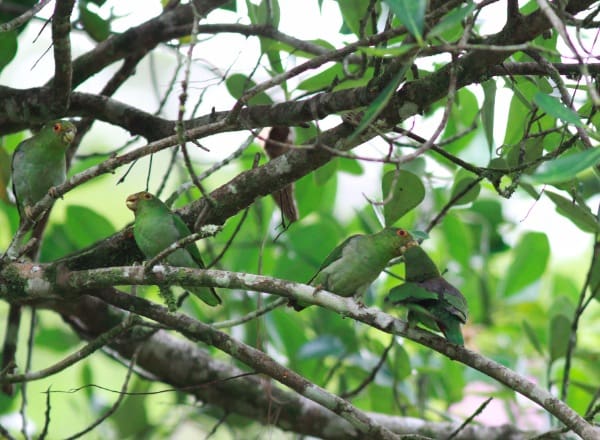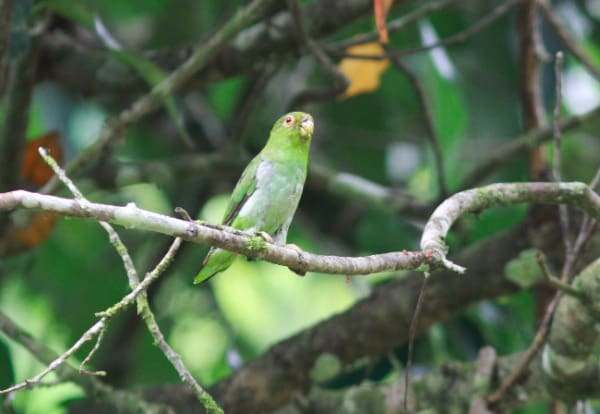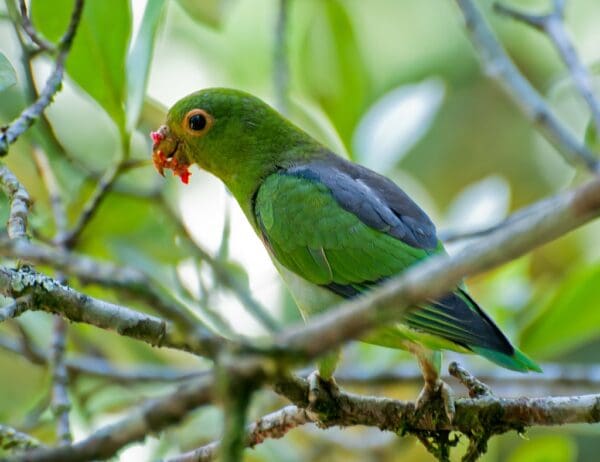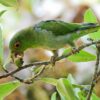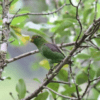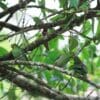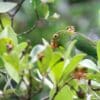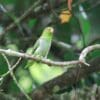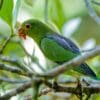Brown-backed Parrotlet
Also known as:
Black-backed Parrotlet, Black-eared Parrotlet, Wied's Parrotlet
Also known as:
Black-backed Parrotlet, Black-eared Parrotlet, Wied's Parrotlet
DID YOU KNOW?
Touit parrotlets are shy birds that are frequently overlooked. This makes it difficult to determine the status of these parrots in the wild.

Touit

melanonotus
Size:
15 cm (6 in)
Weight:
Not recorded.
Subspecies including nominate:
one
Colour Adult:
Both adults dark brown mantle and tertial feathers; brown/black scapulars and back; green rump and upper tail coverts; pale blue/grey flanks and sides of lower breast, generally duller and fainter in female; carpal edge has dull red marking; green underwing coverts; green central tail feathers, the outer lateral feathers red, banded black near tip and green at tip, the remainder of the lateral tail feathers red tipped with black. Beak olive/yellow with grey at base. Eye ring grey. Eye greyish.
Colour Juvenile:
Like adults, but cere is flesh-coloured and eye-ring paler.
Call:
Calls are described as distinctive and rattling notes.
More Information:
Content Sources:
CITES
BirdLife International
Cornell Lab of Ornithology/Birds of the World
Parrots: A Guide to Parrots of the World, Juniper and Parr, 1998
Parrots of the World, Forshaw, 2006. 2010 edition
Vanished and Vanishing Parrots, Forshaw, 2017.
Captive Status:
Not found in captivity.
Longevity:
—
Housing:
—
Diet:
—
Enrichment:
—
Nest Box Size:
—
Clutch Size:
Not recorded.
Fledging Age:
—
Hatch Weight:
—
Peak Weight:
—
Weaning Weight:
—
World Population:
10,000 mature individuals, decreasing.
IUCN Red List Status:
Near Threatened
CITES Listing:
Appendix II
Threat Summary:
Is a restricted-range species present in the Atlantic Forest Lowlands Endemic Bird Area. Generally rare within a very limited range but may be easily overlooked due to quiet nature. Majority of recent records have come from well-scattered protected areas.The population trend has not been assessed directly, but the species is suspected to be declining as a consequence of the destruction, degradation and fragmentation of its forested habitat. Tree cover is being lost by 3% over three generations. Is strictly forest-dependent and as such the rate of population decline may be exacerbated by the impacts of forest degradation; however, it is unlikely that it exceeds 20% over three generations.
Range:
Confined to SE Brazil, from southern Bahia south to Paraná.
Habitat:
Found from 500-1200 m (1640-3937 ft) in humid forest on lower montane slopes.
Wild Diet:
Feeds on seeds of leguminous trees and fruits of Clusia, Rapanea acuminata and Struthanthus vulgaris. Also seen stripping flower buds of Terminalia catappa.
Ecology and Behaviour:
Social; seen in small groups of 3-20 individuals. Some seasonal and local movements are seen, mainly from lowland to higher areas. Stays in the upper canopy where it quietly goes about its daily activites. Have been observed taking water and leaf-bathing on Terminalia tree.
Clutch and Egg Size:
Not recorded.
Breeding Season:
Assumed to start in September at beginning of rainy season.
